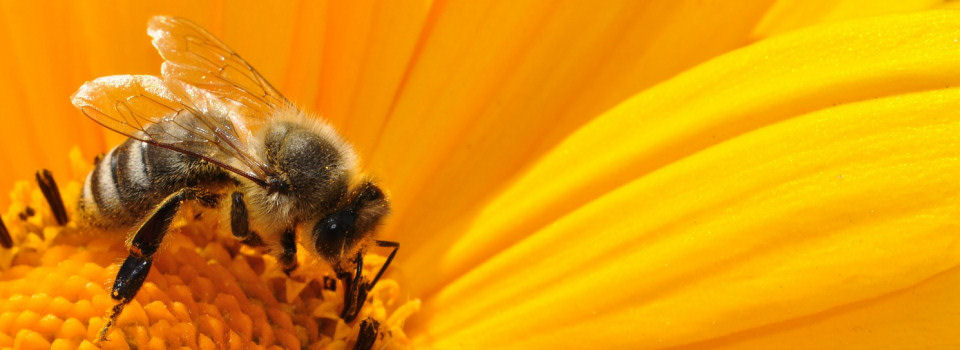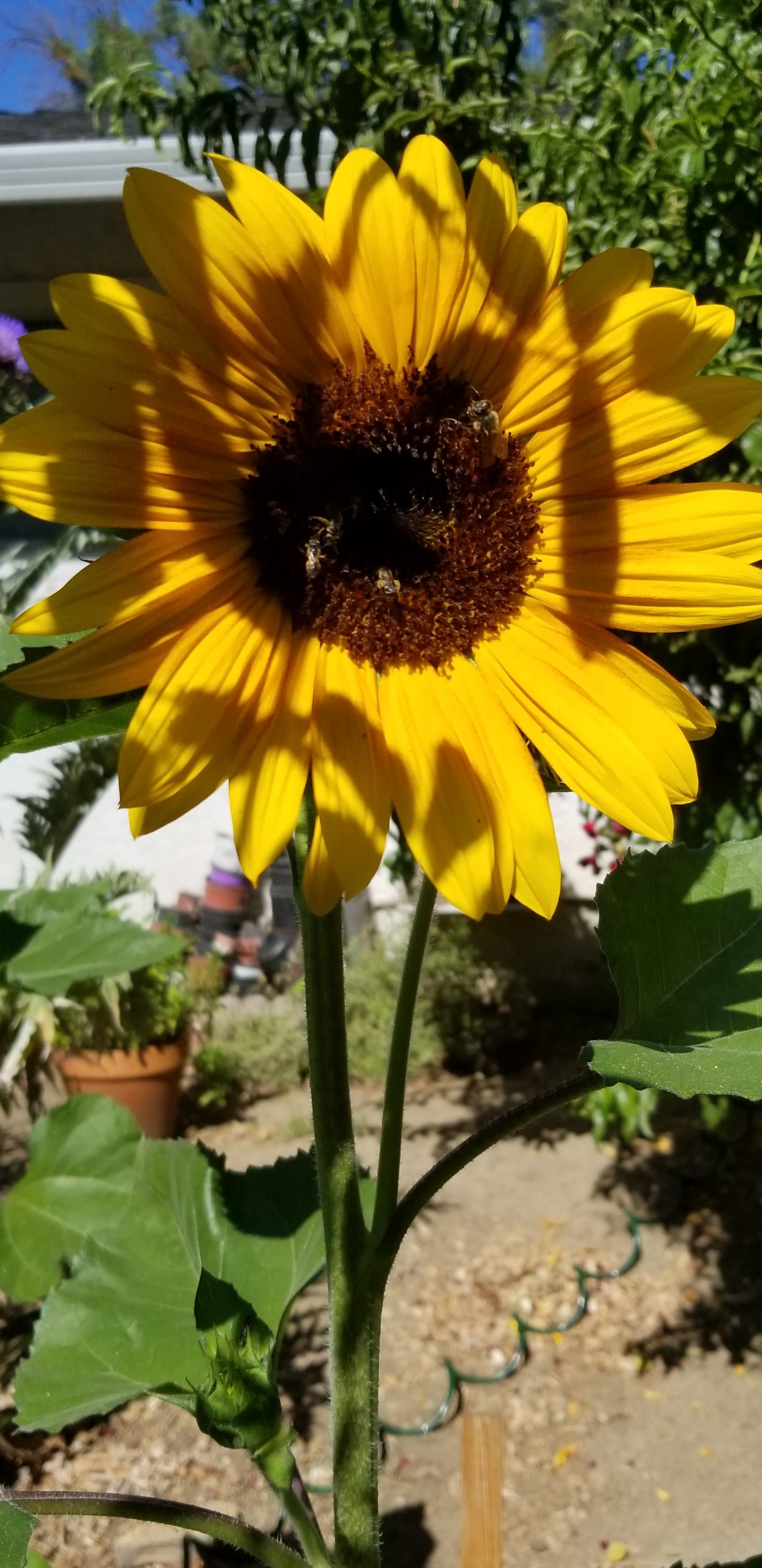Bees are the most prominent group of pollinators. People are most aware of honey bees. Honey bees (Apis Mellifera) are not native to the United States. Honey bees are what you might call generalists. They can utilize many different flowers and we can support them with nectar and pollen. Native bees of the United States tend to be more specialists and utilize the native plants with which they evolved. There are 4000 native bee species in North America, 1600 in California, 300 bee species in Yolo County, 60 species of these visit crops. At Honey Bee Haven on the University of California, Davis campus more than 80 species of native bees have been identified.
Social Bees and Solitary Bees. Honey bees are social bees. Social bees live and work together in a hive over several generations. Bumble bees and some sweat bees are natives that are also social bees. Most native bees are solitary bees. Solitary bees provision their nest and lay their eggs for the next generation on their own—no hive and no honey. Approximately seventy percent of native bees are ground dwelling bees and the remainder are cavity dwellers.
Cavity dwelling bees use hollow stems of pithy plants, tunnels left by wood boring beetles, crevices, and in bee houses. Mason bees, leafcutter bees and carpenter bees are cavity dwelling bees. Mason bees and leafcutter bees look for tunnel-like spaces for their eggs. Once the female bee mates, she begins to look for a place for her eggs, a tunnel in a reed or crevice or your bee house, then she begins to gather pollen (protein) and nectar (carbohydrate) and provision the nest at the end of the tunnel. Then she will back down the tunnel and deposit an egg. In the case of the Mason bee, she will bring mud in and seal the small cell with the egg. She will continue to fill the tunnel with cells. As she places the egg she can chose to fertilize it to become a female or a male. She will usually place the females in the back and place the males in the front. There the egg will become a pupa and then a fully formed bee will emerge the next spring. The males in the front will be waiting for the females and the cycle will begin again. The leafcutter uses leaves instead of mud to partition the egg cells.
Ground dwelling bees include mining bees, alkali sweat bees, polyester bees, and squash bees. Ground dwelling bees need an area of mulch free, bare ground to build their nests.
Bees prefer blue, purple, and yellow flower with a sweet scent. Bees cannot detect the color red. Bees can work more efficiently when they can work several of the same flowers grouped together in drifts of blooms of approximately four feet. Try to have some plants in bloom in each season.
For example:
- Winter and Spring: Ceanothus, Western red bud, rosemary
- Summer: Asters, California Goldenrod, Gaillardia (blanket flower)
- Fall: Salvia greggii (autumn sage), Eriogonum fasciculatum (California buckwheat), Sedum Autumn Joy
For information on California native plants go to Calscape.

